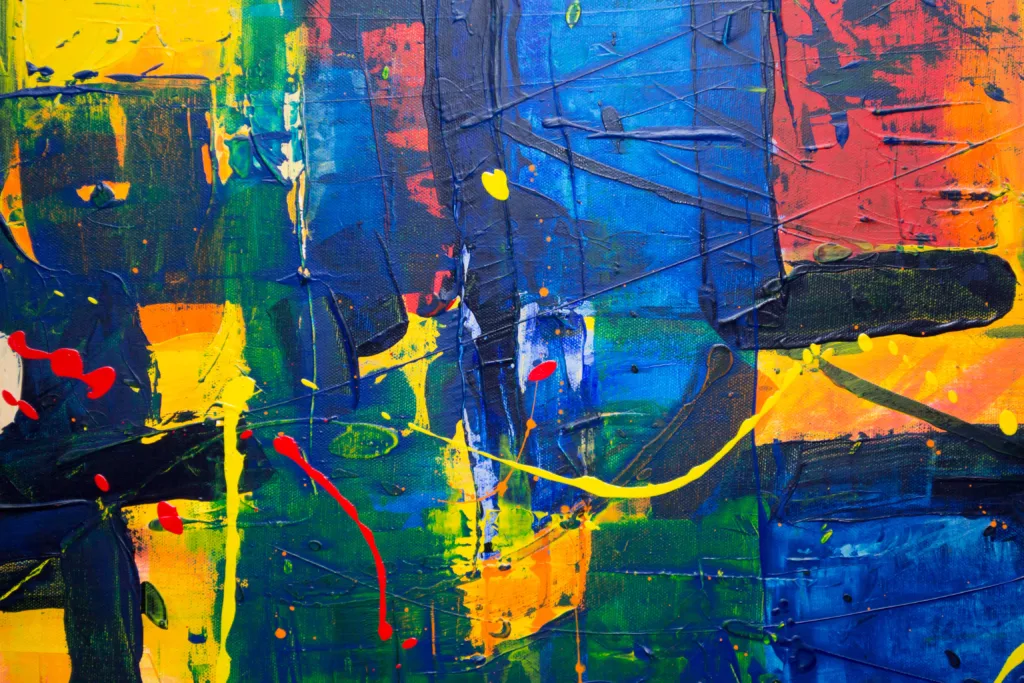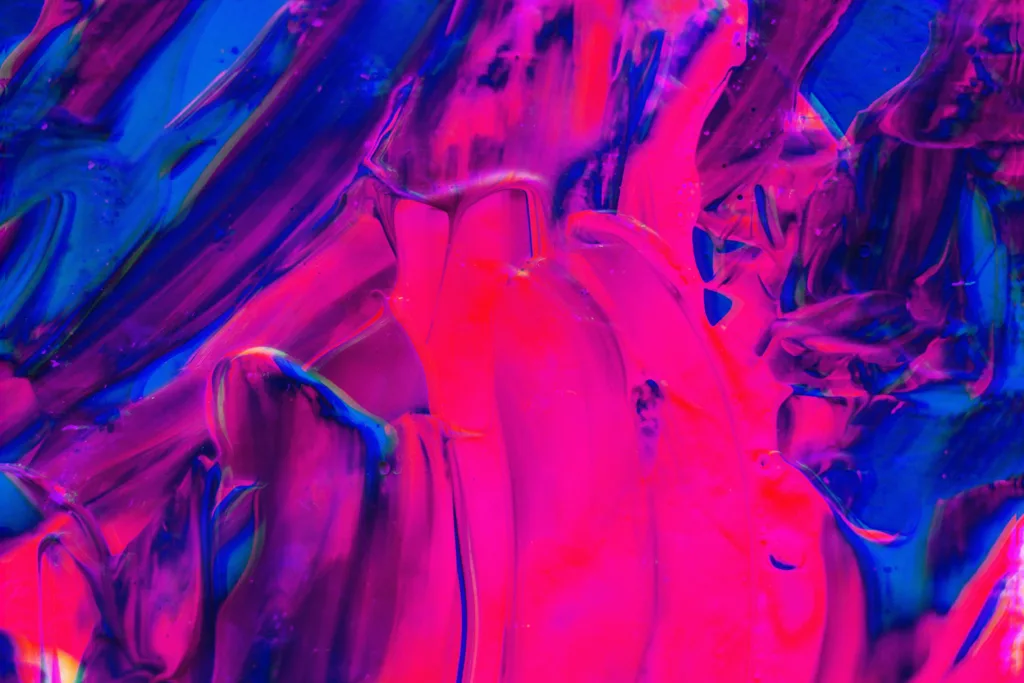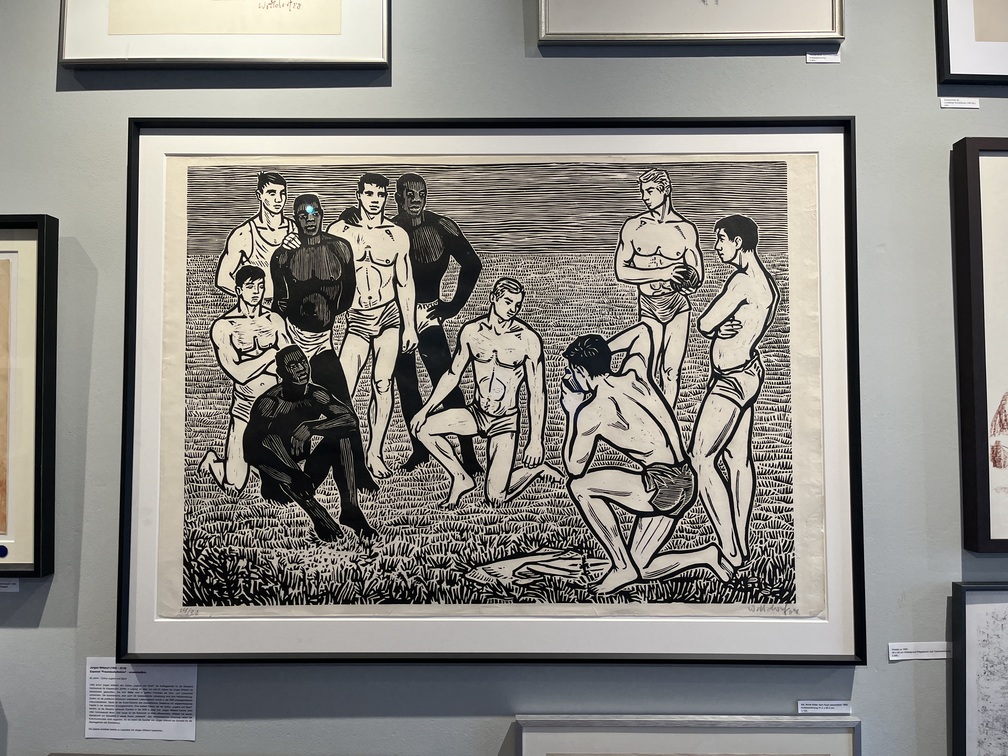1 Jahr Galerie Newman / Geburtstag 28.03.2024 Am 28.03.2024 feierte die Galerie Newman in entspannter Atmosphäre ihr einjähriges Bestehen. “Ein bewegtes Jahr liegt hinter…


Nude drawings, portraits of utopic beautiful men, bondage and leather guys and revealing photographic works by LGBTQ+ artists are the themes of the exhibition “Utopia and Nudity” and at the same time the trademark of Galerie Newman in the middle of the queer neighborhood on Nollendorfplatz.
Between gay sex shops and bars, this gallery has been aimed specifically at men who like to see men since the beginning of September. Well-known artists such as Jürgen Wittdorf, Henning von Berg, Frank Lorenz, Markus Hoffmann-Aschenbach and Andreas Fux are represented, as are newcomers and career changers.
The large selection of different styles on 100m2 offers visitors a wide variety of different works and at the same time the opportunity to find something to suit every budget. In the future, small events will also take place where visitors can, for example, come into direct contact with the artists.
If desired, we will develop a concept and solution for your specific needs - from the idea to implementation, we help with the design of rooms. We rely on a network of curators and artists from across the art world
1 Jahr Galerie Newman / Geburtstag 28.03.2024 Am 28.03.2024 feierte die Galerie Newman in entspannter Atmosphäre ihr einjähriges Bestehen. “Ein bewegtes Jahr liegt hinter…
(1932 – 2018)
60 Jahre – Zyklus Jugend und Sport
1964 schuf Jürgen Wittdorf den Zyklus „Jugend und Sport“ als Auftragsarbeit für die Deutsche Hochschule für Körperkultur (DHfK) in Leipzig. Im Alter von erst 32 Jahren hat Jürgen Wittdorf ein Meisterwerk geschaffen. Die fünf Bilder sind in großen Formaten als Holz- und Linolschnitt entstanden. Die künstlerische aber auch die handwerkliche Umsetzung sind eine Meisterleistung.
Zudem ist die politische Dimension interessant: Leistungssport wurde in der DDR propagandistisch instrumentalisiert. Heute ist die Kunst-Epoche des sozialistischen Realismus ein abgeschlossenes Kapitel in der deutschen Kunstgeschichte. Eine weitere Ebene, die der Zyklus „Jugend und Sport“ berührt, ist die Situation schwuler Künstler in der DDR in jener Zeit. Jürgen Wittdorf konnte nicht offen homosexuell leben. Erst heute ist die Botschaft im Werk offensichtlich.
Wittdorf hat seinen Standpunkt zur Sexualität in seiner Kunst „versteckt“. Den homoerotischen Einschlag haben die Kulturfunktionäre nicht registriert, für sie waren die Sportler von Jürgen Wittdorf ein Sinnbild für die Überlegenheit des Sozialismus.

25.07.1932 geboren in Karlsruhe aufgewachsen in Hamburg und Königsberg (heute Kaliningrad)
Seit 1945 in Stollberg im Erzgebirge, Schulbesuch
1950 bis 1952 Kunstzirkel bei Walter Schurig
1951/52 erste Ausstellungsbeteiligungen in Karl-Marx-Stadt (heute Chemnitz)
1952 Umzug nach Leipzig
1952 bis 1957 Studium an der Hochschule für Grafik und Buchkunst Leipzig
Ausbildung im Bereich Grafik bei den Lehrern Kurt Dietze, Alexander Neroslow, Gabriele Meyer-Dennewitz und Johannes Lebek
1957 Mitglied der SED und im Verband Bildender Künstler in der DDR
1957 Auftragswerk des Kulturfonds: Zyklus Tiermütter und Kinder im Zoo, Lithografien
1958/59 Zeichenlehrer an der Volkshochschule in Leipzig
1958/59 Auftragswerk: Zyklus Jugend in der Landwirtschaft, Holzschnitte, Lithografien
Arbeits- und Studieneinsatz „Künstler in die Betriebe“, dem sog. „Bitterfelder Weg“ folgend, auf dem volkseigenen Gut Köllitsch bei Torgau
1959 bis 1963 Lektor für Kunsterziehung am Pädagogischen Institut der Karl-Marx-Universität Leipzig
In den Sommern Arbeits- und Studienaufenthalte mit den Student:innen in der Erzhütte Helbra bei Eisleben und auf den LPGs: Kohlezeichnungen von Arbeitssituationen und erste Porträts
1959 bis 1961 Serie Schulschwimmsport: farbige Kreidezeichnungen
1960 bis 1962 Grafikmappe Zyklus für die Jugend: zahlreiche Vorzeichnungen, Holz- und Linolschnitte, erstmals komplett gezeigt auf der V. Deutschen Kunstausstellung Dresden (1962)
1962 Studienreise in die Sowjetunion (Moskau und Kiew)
1962/63 Auftrag des Rates der Stadt Leipzig für das Restaurant Stadt Kiew: Freundschaft mit Kiew zusammen mit Gabriele Meyer-Dennewitz, je drei großformatige Holzschnitte
1963 Kunstpreis der FDJ für den Zyklus für die Jugend und Druck der Mappe im Verlag Junge Welt mit einer Auflage von 10.000 Exemplaren
1961 bis 1965 Teilnahme an fast allen großen Kunstausstellungen der DDR in Berlin: u. a. Akademie der Künste, Pavillon der Kunst, Nationalgalerie, Zentraler Klub der Jugend und Sportler
1963 bis 1967 freischaffend in Leipzig
1963/64 Kunst-am-Bau-Auftrag für die Deutsche Hochschule für Körperkultur Leipzig: Serie Jugend und Sport mit fünf großformatigen Holz- und Linolschnitten
Coming-Out und erste homosexuelle Beziehungen
1964 Kauf eines Bauernhauses in Carwitz zusammen mit Gabriele Meyer-Dennewitz. Der Ort wird zum Sommersitz mehrerer Leipziger Künstler wie G. A. Schulz, Harry Blume oder Hans Mayer-Foreyt.
1964/65 Auftragswerk der Stadt Leipzig für das Studentenwohnheim Jenny Marx: Völkerfreundschaft, zwei großformatige Linolschnitte
1964/65 Thema Ballett: Zeichnungen und Drucke
1965 Studienaufenthalt in den Zentralen Werkstätten Berlin am Institut für bildende Kunst der Kunsthochschule Weißensee im Monbijoupark: Abkehr von Holz- und Linolschnitten, Erprobung anderer Drucktechniken wie Radierungen, Aquatinta und Steindruck: Tiere im Leipziger Zoo, Ballett und Paare
1966 Künstlerische Krise, Kontaktaufnahme mit Lea Grundig
1967 bis 1970 Ernennung zum Meisterschüler an der Deutschen Akademie der Künste Berlin bei Lea Grundig, Erprobung neuer Zeichentechniken, Verdichtung der Bildgestaltungen
1967 Farbholzschnitt Sommer in Mecklenburg
1968 Aufenthalt im Bergbau der SDAG Wismut, Serien zu Neubau-Altbau und Umzug
1969 Studienaufenthalt in der Sowjetunion (Moskau, Leningrad, Kiew und Aserbeidschan): zahlreiche Stadtansichten, Landschaften mit Bohrinseln und Porträts
1970 Umzug nach Berlin, freischaffend
1970 bis 1989 Aufträge für Ausstellungsbetreuungen, Organisator der Galerie der Freundschaft mit Kunstwerken von Kindern,1977 im Alten Museum in Berlin und 1982 im Albertinum in Dresden, daneben Kurator von Ausstellungen von Laienkünstlern
1971 bis 1990 Zirkelleiter/Kunstlehrer am Haus der jungen Talente und am Haus des Lehrers
1971 bis 1979 Wohnung in Berlin-Lichtenberg
1971 bis 1973 wieder verstärkt Aktzeichnungen, erste Arbeiten mit Ton
1973 bis 1975 Zyklus für die Weltjugendfestspiele in Berlin: Kohlezeichnungen, 1975 Druck einer Mappe mit 20 Lithografien
1979 Umzug innerhalb Berlins von Lichtenberg nach Friedrichshain zum Kotikowplatz (Petersburger Platz)
1983 bis 1985 Kunst-am-Bau-Auftrag für die Kantine der Volkspolizei in Berlin: 170 bemalte Keramikteller zum Thema „Leben in Berlin“
1986 bis 1988 Auftragsarbeit zum Thema „Die Volkspolizei in Berlin“: drei Radierungen
1989 Umzug vom Kotikowplatz in die Kreutziger Straße, wo er bis zu seinem Tod lebt
1990 Wittdorf werden alle Verträge als Zirkelleiter gekündigt (Haus der jungen Talente, Haus des Lehrers)
1992 bis 2005 privater Kunstzirkel in seiner Wohnung für einige Freund:innen, farbige Zeichnungen von Stillleben werden zum zentralen Thema
Verkauf seiner Antiquitäten und Kunstsammlung zur Sicherung des Lebensunterhalts
2000 erster Kontakt zum Schwulen Museum Berlin
2004 Einzelausstellung im Schwulen Museum Berlin, erneute Anerkennung, zahlreiche Presseartikel
Weitere kleinere Ausstellungen, u. a. in der Kiezkneipe „Stiller Don“ und im Heimatmuseum Lichtenberg
Nachdruck seiner großformatigen Drucke Jugend und Sport und der Gruppe mit Fahrrädern, neue Auflagen von den alten Druckstöcken
2012 Einzelausstellung zu seinem 80. Geburtstag im Schwulen Museum Berlin
ab 2010 Dauerausstellung im Lokal „Die Garbe“ in Friedrichshain mit Stillleben
ab 2012 Zusammenarbeit mit der Studio Galerie Berlin, Verkauf von Druckgrafiken und Zeichnungen. Motive die ursprünglich als Holzschnitt gedruckt wurden erscheinen als Kunstdruck-Edition
2016 bis 2018 zunehmende Altersdemenz, betreut durch Freunde und das Unionshilfswerk Berlin
02.12.2018 Tod von Jürgen Wittdorf
2019 der Nachlass von Jürgen Wittdorf wird versteigert, Gründung Sammlung Jürgen Wittdorf
2020 Einzelausstellung und Katalog „Lieblinge“, Werke aus der Sammlung Jürgen Wittdorf im KVOST – Kunstverein Ost, Berlin
2022 Retrospektive im Schloss Biesdorf, zum 90. Geburtstag des Künstlers, mit zeitgenössischen Positionen u.a. von Norbert Bisky
Vielen Dank an den Kunstwissenschaftler Dr. A. Sternweiler für den Lebenslauf von Jürgen Wittdorf.
Der Zyklus Jugend und Sport umfasst mehrere Motive. Die Original Werke werden abwechselnd in der Galerie Newman ausgestellt. Öffnungszeiten sind Mo-Sa. von 12:00 Uhr bis 18:00 Uhr und auf Wunsch nach Vereinbarung.
Zu Lebzeiten wurden verschiedene Motive auch als Grafik Kunstdrucke von Wittorf angefertigt und veräußert. Bei den ausgestellten und zum Verkauf angebotenen Werken handelt es sich um Grafik Kunstdrucke, die er selbst zu Lebzeiten in Zusammenarbeit mit Jan Linkersdorff angefertigt hat.
Jan Linkersdorff stellte seit 2012 verschiedene Werke in Zusammenarbeit mit Wittorf aus. Aus der Zusammenarbeit wurde im Laufe der Zeit eine gute Geschäftsbeziehung. Als Wittorf 2018 verstarb konnte Jan Linkersdorff einen Teil seiner Werke erwerben. Daraus entstand die Sammlung Jürgen Wittdorf, die sich zum Ziel gemacht hat, das Andenken und Schaffen Wittorf aufrecht zu erhalten.
Der renommierte deutsche Kunsthistoriker Dr. Wolfgang Hütt bezeichnete Wittdorf als einen der wichtigsten Grafiker seiner Zeit.
Verschiedene Formate in limitierter Auflage sind in der Galerie erhältlich.
Als Künstler in der DDR war Wittdorf vielen als Illustrator verschiedenster Bücher bekannt. Seine Werke, darunter unzählige meisterhafte Holzschnitte, sind durch den Realismus- Begriff der damaligen Zeit geprägt, seine Darstellungen junger Menschen fanden allerdings vorerst bei der Staatsobrigkeit wenig Gefallen, zu sehr verwestlicht erschien ihnen dieser Blick auf die Jugend. Diese wiederum fand sich in Wittdorfs Bildern wieder. Später wurden sie in hoher Auflage gedruckt und verbreitet. Auch das eigene Sein als schwuler Mann spiegelt sich in diesen Werken. Obwohl Homosexualität ab 1968 laut Gesetz nicht mehr strafbar war, war sie doch gesellschaftlich nicht akzeptiert, Wittdorf selbst konnte sich seine Sexualität lange nicht eingestehen. Aus heutiger Sicht sind seine Werke im Spannungsfeld zwischen gesellschaftlich fixierten Normen der DDR und der sehr persönlichen Sicht auf diese Gesellschaft mehr als ein Zeitdokument. Die Kunstwerke Jürgen Wittdorf stehen auch für ein Künstlerleben, das mit dem Fall der Mauer kaum noch wahrgenommen wurde.
Ein großer Teil seines umfangreichen Werkes waren 2023 im Schloss Biesdorf zu sehen, ergänzt durch zeitgenössische Positionen von Veneta Androva, Norbert Bisky, Harry Hachmeister und Bettina Semmer. In den Arbeiten dieser Künstlerinnen und Künstler werden Themen wie Gender und künstliche Intelligenz (Veneta Androva), Schönheit, Sexualität, Gewalt und Zerstörung (Norbert Bisky), (Geschlechts-) Identitäten, Körper sowie deren Zuschreibungen (Harry Hachmeister), Körper als Element des politischen Handelns (Bettina Semmer) verhandelt. Der visuelle Dialog mit diesen Positionen setzt das Werk Wittdorf in einen neuen Kontext, schafft Verbindungen seiner oft nur angedeuteten Themen in die aktuellen gesellschaftlichen Diskussionen zu den vielen Facetten menschlicher Individualität.
Verschiedene Formate und Motive aus der Ausstellung sind nun in der Galerie Newman erhältlich.
Jan Linkersdorff stellte seit 2012 verschiedene Werke in Zusammenarbeit mit Wittorf aus. Aus der Zusammenarbeit wurde im Laufe der Zeit eine gute Geschäftsbeziehung. Als Wittorf 2018 verstarb konnte Jan Linkersdorff einen Teil seiner Werke erwerben. Daraus entstand die Sammlung Jürgen Wittdorf, die sich zum Ziel gemacht hat, das Andenken und Schaffen Wittorf aufrecht zu erhalten.
Der renommierte deutsche Kunsthistoriker Dr. Wolfgang Hütt bezeichnete Wittdorf als einen der wichtigsten Grafiker seiner Zeit.
Verschiedene Formate in limitierter Auflage sind in der Galerie erhältlich.
In unserem Netzwerk, bestehend aus Museen, Kunstsammlungen, Stiftungen und Auktionshäusern, gibt es Spezialisten, die uns helfen, den Wert eines Werkes zu definieren.
Contact
Phone: +49 (0) 30 64461695
Mail: hallo@galerie-newman.de
Opening hours
Mo. + Wed. + Fr. + Sa.: 12:00 - 18:00
Di. + Thu.: 15:00 – 18:00
+ and by appointment
Mobil: +49 (0) 172 – 73 53 249
With our newsletter you are always up to date with our latest news and on the invitation list, guest list for events, openings and whatever else we will be doing.
This will close in 0 seconds